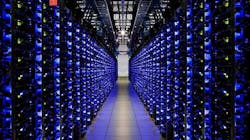Report: Data Center Efficiency Will Yield $60 Billion in Savings
America’s data centers have dramatically improved their energy efficiency, resulting in a small increase in industry electricity use during a period of explosive growth for cloud computing and online services, the U.S. government said Monday. Researchers said the industry’s reduced use of energy – also known as “negawatts” – will yield $60 billion in energy savings by 2020.
The nation’s data centers used an estimated 70 billion kilowatt hours of energy in 2014, an increase of just four percent from 2010, accounting for 1.8 percent of total U.S. electricity consumption. That’s a huge change from the previous decade, which saw double-digit annual gains in data center power usage.
The report soundly debunks the popular notion of data centers as energy hogs, a thesis advanced by The New York Times in a controversial 2012 series. Instead, the nation’s server farms have become remarkably efficient in their use of energy, making business functions more efficient as they shift to digital platforms.
The Power of the Negawatt
“Over that decade, the amount of energy savings is about 620 billion kilowatt-hours, or more than $60 billion, thanks to efficient practices,” said Arman Shehabi, a researcher at Lawrence Berkeley National Labs (LBNL) and one of the lead authors of the report.
The researchers said the vast improvement in data center efficiency, combined with the IT industry’s ongoing shift to the cloud computing model, offers the potential for even more dramatic gains in energy management in coming years.
“This is the big story — we have an opportunity to reduce energy use in U.S. data centers even further while at the same time providing an order of magnitude more computational output,” said Dale Sartor from LBNL (which has published a useful summary of its findings).
Cloud Shift Boosts Efficiency
The growth of cloud computing has been a major factor in the improved energy use, as IT workloads have shifted from corporate server rooms to extremely efficient hyperscale data centers operated by leading Internet companies.
“Nearly all server shipment growth since 2010 occurred in servers destined for large hyperscale data centers, where servers are often configured for maximum productivity and operated at high utilization rates, resulting in fewer servers than would be required to provide the same services in traditional, smaller, data centers,” the report said. “It is important to note that this near constant electricity demand across the decade is occurring while simultaneously meeting a drastic increase in demand for data center services; data center electricity use would be significantly higher without these energy efficiency improvements.”[clickToTweet tweet=”The 10-year energy savings from data center efficiency is about 620 billion kilowatt hours, or $60 billion.” quote=”The 10-year energy savings from data center efficiency is about 620 billion kilowatt hours, or $60 billion.”]
The data center was slow to focus on energy efficiency from 2000 to 2005, reflected in 90 percent growth in data center energy use during that period. Things improved between 2005 and 2010, with energy usage rising just 24 percent, due to an improved emphasis on best practices as well as the economic slowdown.
A pivotal shift occurred in 2007-2009, when data center providers began sharing best practices in industry forums and conferences, a major change from the secrecy that once surrounded data center operations. This period saw the founding of The Green Grid, an industry consortium focused on energy efficiency, as well as a decision by hyperscale pioneer Google to share its closely-held efficiency secrets with the industry.
“I’m happy Google contributed to this positive effect by publishing its efficiency since 2008 and by promoting techniques for more efficient use, starting with the first data center efficiency summit in 2009,” said Urs Holzle, Senior VP of Technical Infrastructure at Google. “I’m even more optimistic than the study authors and would predict that total energy usage will go down as more IT users transition to public clouds, which not only have the most efficient buildings but through consolidation and elastic scaling reduce the energy per application. And on the client side, mobile devices use much less power than desktops, reducing total IT energy usage even more.”
This chart demonstrates how data center energy usage has changed from the 2010 projections (shown by the upper dotted line)
The findings were welcomed by Jon Koomey, an energy expert from Stanford University who co-cauthored both the original 2008 report and the new data. Koomey has long been a leading voice in the push for improved data center energy management.
“As I’ve argued for years, the level of inefficiency in enterprise data center facilities leaves lots of room for improvement, and the market is finally getting that message,” Koomey wrote on his blog.
The report found that smaller data centers, which are not increasing in number but still projected to account for 60 percent of all data center energy use in 2020, are still often inefficient. “The industry growth is primarily in hyperscale data centers, but there’s opportunity in the typical corporate or institutional data center,” Sartor said. “There are millions of them in closets or small rooms, and they’re not very efficient.”
The report cited three reasons for improved efficiency:
- Data center operators have improved their cooling and power management.
- Server vendors have reduced the power used by servers when they are idle.
- End users have consolidated servers, often through virtualization.
“In the past, most data centers blasted air conditioning indiscriminately to keep equipment from getting overheated,” said Shehabi. “This is grossly inefficient. Now there are more advanced cooling strategies, such as hot aisle isolation, economizers, and liquid cooling, which all make the cooling process far less energy intensive.”
About the Author


